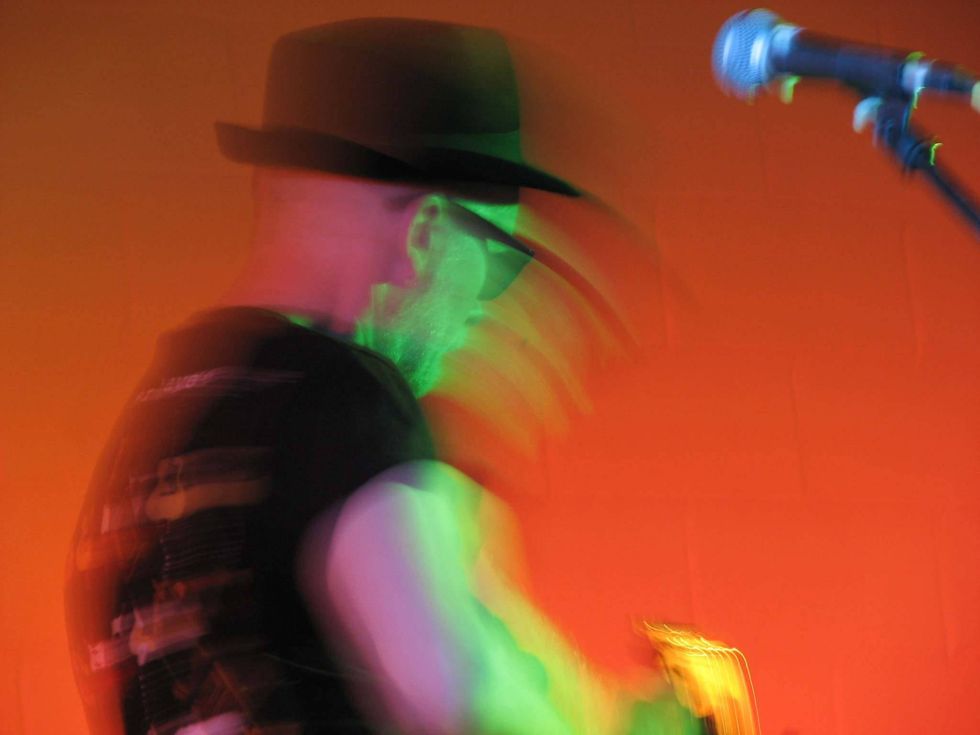An acronym for Musical Instrument Digital Interface, MIDI is a hardware and communications protocol for interconnecting electronic instruments and other gear. MIDI was introduced in 1982, and it was initially used to synchronize synth keyboards. Soon it made its way into sequencers, drum machines and pads, and rackmount effect devices and studio equipment. Before long, MIDI was even integrated into specialized guitars and basses. Historically, bassists never really embraced MIDI. Why would you choose to learn bass and then spend even more money on equipment to trigger a synth module or keyboard? Why sound like a synth when you can have pure, glorious bass tone?
But MIDI is having a revival of sorts, and today it’s seen as more than just a gimmick. This has a lot to do with recording. Virtually every musician now has the ability to create multitrack recordings, anywhere at any time. The tools are now in players’ hands to accomplish their goals, whether that’s to preserve ideas, compose new material, or even record music for commercial release. Having the ability to share complete songs and arrangements—while relying solely on the one instrument you’ve learned—is a compelling dream for many musicians. To capitalize on this desire, more manufacturers are developing new and different ways to create MIDI data via innovative detection systems.
Before we examine one of these new MIDI systems, let’s take a moment to review the basics and clear up any misunderstandings. MIDI doesn’t transmit sound per se, but rather instructions for triggering sound from an audio-generating device. For example, MIDI can indicate when a note of a certain pitch should occur, the velocity of the note’s attack, how long the note should sustain, and how it should decay before being released. It’s this type of information that flows through a standard MIDI cable.
On a keyboard synth, detecting intended pitch and dynamics is rather easy—after all, those keys are simply sophisticated switches—but this becomes tricky on a stringed instrument. As bassists, we use two hands to form a complex analog signal. For instruments like ours, which have vibrating strings that create an ever-changing set of overtones, MIDI is and will always be a compromise. That’s because a certain amount of left- or right-hand information inevitably gets lost in the course of detecting and interpreting the signal that comes from a bass, and the accuracy of this process is highly dependent on which system you use.
To date, the best-known MIDI device for bass has been the bulky Roland GK system (Photo 1), which receives its signals from a hexaphonic pickup mounted close to the bridge. All six separate string signals run through a 13-pin connector and cable to a controller, and it’s the controller that does the real work in interpreting and forming the MIDI signal that triggers sound samples or sends the MIDI data elsewhere. That’s a lot of additional hardware for the occasional fun of triggering synth sounds or samples with a bass.
Right from the beginning, latency in pitch detection was a significant problem. Increased computational power—and especially better algorithms—have helped to bring this down to a dozen milliseconds. Of course, latency is a system-related problem that can never be zero. If it were zero, the system would need to know the note before it’s actually played. Theoretically, the system needs to wait a minimum of one-half of a sinusoidal waveform to receive all necessary information about a note’s pitch, and when it comes to our low end, that can be a pretty long time. Faster hardware and tricks like predicting an emerging note by the slew rate of the upcoming wave have helped reduce these delay times.
And of course, the pickup is another factor that impacts the speed and accuracy of detection. Alternatives to Roland’s hexaphonic pickup include optical pickups from LightWave and systems with individual piezos for each string. These pluck-detecting systems have one thing in common: sensors located at the instrument’s bridge.
A different approach skips the pickup and detects pitch information directly from the frets themselves. This essentially turns each fret position into a button, thus converting our fretboard into a keyboard. FretTraX—a “fret-scanning” system promoted by bass hero Victor Wooten—uses this technology. While FretTraX is a relative newcomer, the basic idea isn’t new. In the early ’90s, Peavey’s Midi Bass and Cyberbass used similar concepts to trigger notes, as did Hagstrom’s Patch 2000 guitar. Introduced in 1977, the latter actually predates MIDI.
Despite their differences, all these systems come at a price—not only for the hardware, but also in terms of specific limitations in functionality. Ah, but what if computational power can overcome these limitations? Check back next month to find out.












![Rig Rundown: Russian Circles’ Mike Sullivan [2025]](https://www.premierguitar.com/media-library/youtube.jpg?id=62303631&width=1245&height=700&quality=70&coordinates=0%2C0%2C0%2C0)







